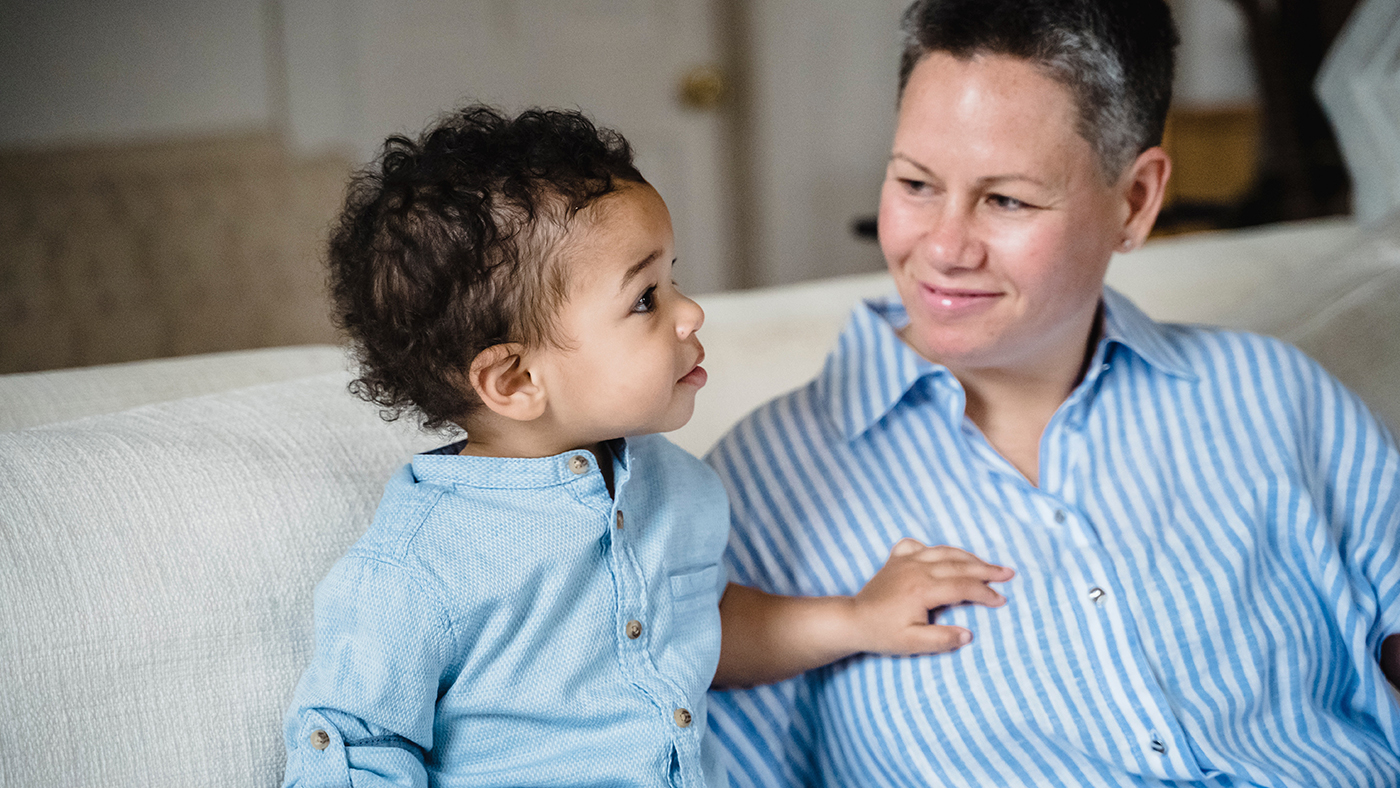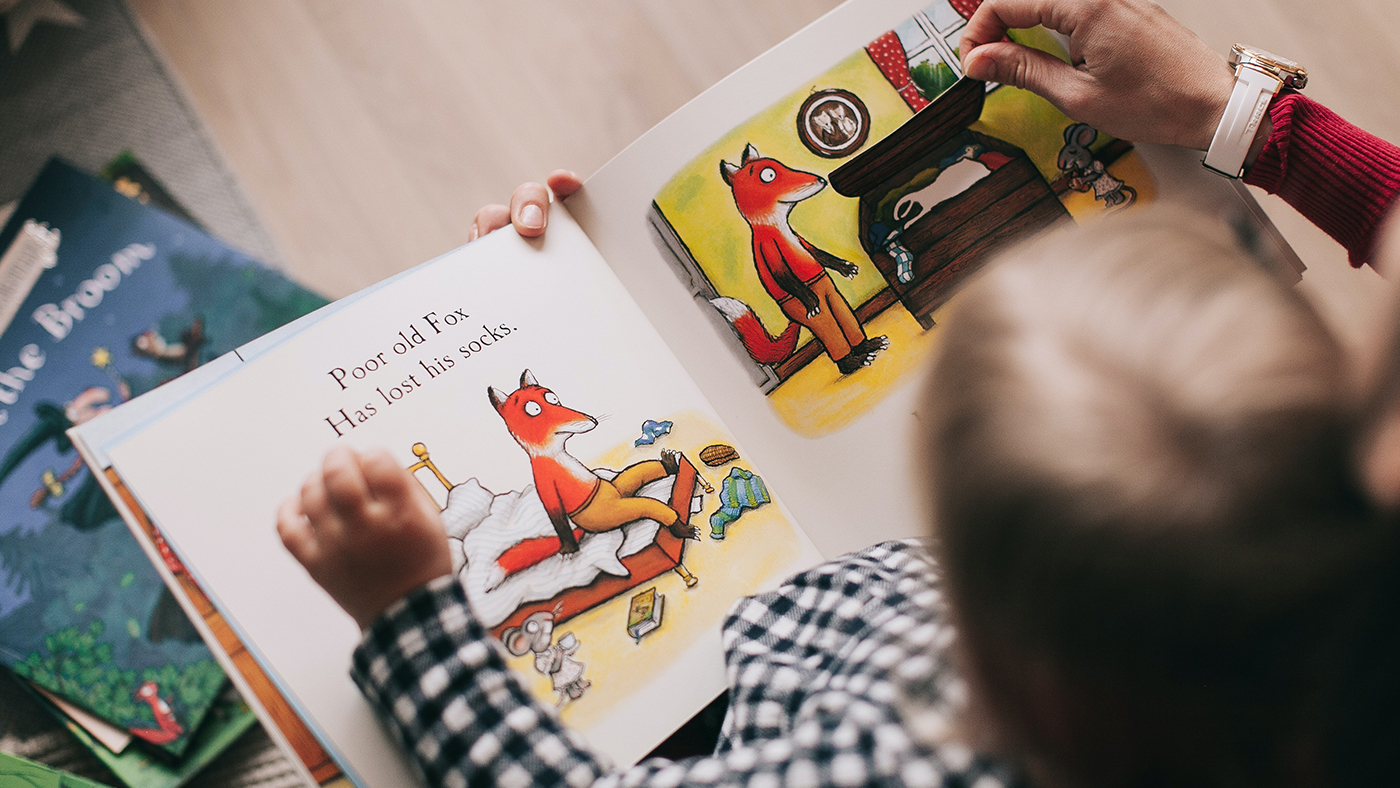Nursery rhymes and language
- Language,
- Nursery Rhymes

Nursery rhymes are fun, joyful and often silly. They offer children a chance of learning at their own pace. The very nature of this can assist young children in becoming proficient readers. When hearing, learning, and reciting them children, not only enjoy the pleasure of words, but they also learn early reading skills. Phonemic skill development gained from nursery rhymes has even been scientifically shown to significantly improve reading, spelling, and other literacy skills. [1]
How is language developed through rhyme?
Nursery rhymes promote an awareness of rhyme along with the learning and processing of new words
Nursery rhymes are often children’s first exposure to different types of rhyme. By hearing rhyme, children will begin to copy this as they join in reciting nursery rhymes, and some children might even play with replacing words to make their own rhymes!
Nursery rhymes have a whole host of new words for children to enjoy. For example, ‘Jack and Jill’ introduce children to words such as ‘Pail’ and ‘Crown’ which are words they are unlikely to have heard in context before. It also allows them to pronounce and understand what words mean through their visual representation in the rhymes [2]. In addition to understanding the words, Nursery rhymes teach how to put events in order which can encourage children to recall events in sequence, question the events and finally understand why they fall in that order.

We can all join in! The Introduction of rhythm and pitch and a relaxed environment
If your child is a reluctant talker, nursery rhymes are a super way of encouraging them to talk. Children often have the desire to join in with others and nursery rhymes offer a way of bringing people together. Nursery rhymes can often be silly and make little sense; providing a natural foundation of inquisitiveness to emerge in a fun relaxed approach. Through the recital of rhymes, children are also learning about pitch, volume and voice inflection through the rhythmic nature of the songs. This further supports the arousal of interest, confidence and energy to join in.
Links to phonological awareness and then reading
Rhyme is a huge stepping stone towards phonological awareness in young children as they develop the understanding that words sound the same. This is also a step towards children being able to hear different parts of words, as they will begin to separate the rhyming “chunk” from the initial sound.

Nursery rhymes are also constructed in a way that similar sounds pop out at you, and this is not something that comes from ordinary conversation. Nursery rhymes encourage listening skills, as children naturally listen out for the words that sound the same and it is exciting to join in with them, or make new words up. This helps children’s brains to process and segment syllables and will help them to break down and construct words by sounds in the future [3].
Introduction to the concept of metalinguistics
Metalinguistics is the ability to focus on language, think about it and discuss it. It teaches you how to talk differently when in a Library to when you are out with friends or family. Metalinguistic skills give an ability to truly think about a word and how it can be used, for instance when people tell jokes, they play on a word or use intonation to give meaning. Nursery rhymes make us think about things differently and question what we are hearing. Providing children with these skills early is said to support children’s understanding of manipulating language.
And we mustn’t forget, Fun!!!
Nursery rhymes promote the use of playful language and introduce creative ways of pronouncing and singing the phrases. Even very young children may predict the rhyme's flow and begin to participate using body language and gestures before the words are spoken. Children learn how to speak the words as a result of the natural repetition of the words and rhyme, making it easier for them to participate when they are ready.
Have a play with these nursery rhymes, and think about the language used and where the rhyming words are. You can make up actions and even change the words if your child has developed the skills for this.

At the zoo
At the zoo we saw a bear, (you could stand up tall and proud)
He had long dark fuzzy hair, (maybe stroke your hair)
We saw a lion in his cage, (use your hands to create a box)
He was in an awful rage, (make a loud roar)
We saw the big long necked giraffe, (extend your hands from near to far)
And the silly monkeys made us laugh (laugh out loud)
But my favorite animal at the zoo, (gesture a question)
Is the elephant - how about you? (point to your child)
We have more blogs coming soon that will explore the other areas of learning that Nursery Rhymes can promote!
References:
[1] Harper, L. J. (2011). Nursery rhyme knowledge and phonological awareness in preschool children. The Journal of Language and Literacy Education [Online], 7(1), 65-78.
[2] McIntosh, D., Miller, L., Shyu, V., and Dunn, W. (1999). Overview of the short sensory profile. In The Sensory Profile: Examiner’s Manual, W. Dunn, ed. San Antonio. The Psychological Corporation.
[3] Meltzoff, A. and Moore, M. (1999) Why infant imitation is important for theories of human development. In: Nadel, J., and Butterworth, G. eds. Imitation in infancy. New York: Cambridge University Press.